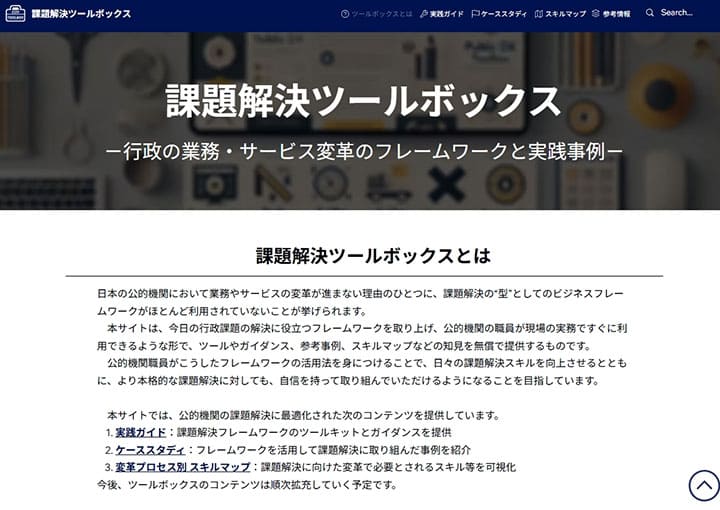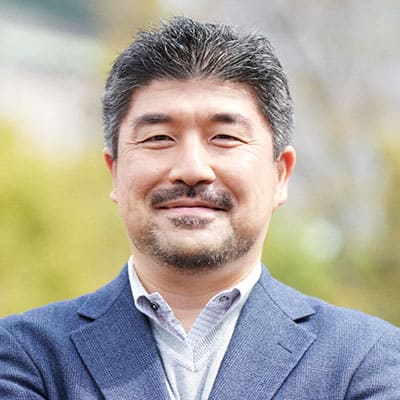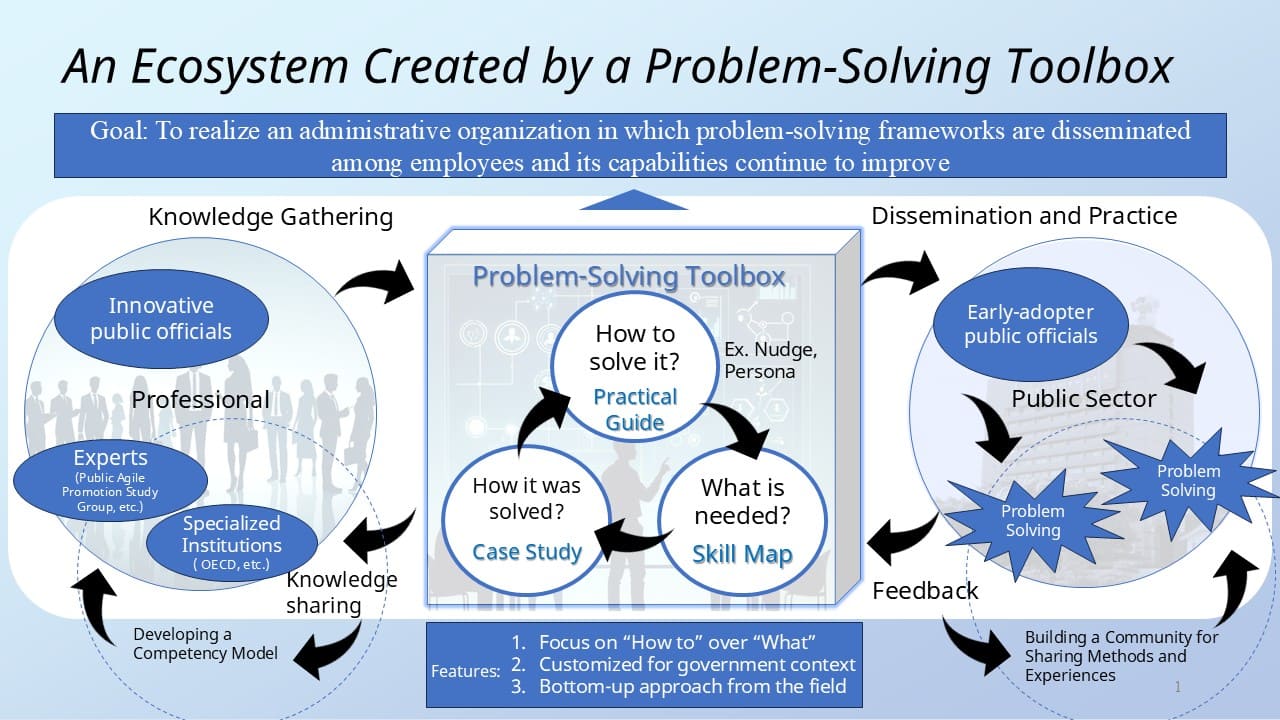Transforming Japan's Public Administration by Improving the Problem-Solving Skills of Civil Servants
Categories:
Overview
Creating an ecosystem to enhance the problem-solving skills of public institutions and realizing innovation in public administration through the development of human resources for the civil service
Government agencies and other public institutions are facing an increasing number of complex and diverse issues that transcend conventional boundaries. On the other hand, their budgets and staffing are limited, and the situation is growing increasingly severe. Conventional operational improvements and simple digitalization efforts are no longer sufficient to deal with this situation, and this trend is likely to intensify going forward. What is required from now on is for each and every employee of public institutions to acquire the ability to accurately perceive issues and creatively solve them— in other words, to increase the productivity of problem solving.
I, the principal investigator in this study, came to feel that there was a need to improve the problem-solving skills of employees of public institutions from my wide-ranging experience, including policy making at a central government agency, consulting at a think tank, and conducting practical research at the Institute of Administrative Information Systems, I have continued to engage in concrete activities to this end.
Based on my awareness of this issue and my related activities, I released the “Problem-Solving Toolbox—Frameworks and Practical Examples of Administrative Operation and Service Transformation” (hereinafter, “Problem-Solving Toolbox”) in cooperation with the national government, local governments, and the private sector. Available for anyone to use, this is a platform that provides methodologies and frameworks that can be utilized by the employees working on the front lines in public institutions.
This platform is not just a collection of tools, nor is it the end goal of an R&D project. Using this platform will create a cycle of actual practice, verification of effectiveness, and development of new methods, which will support the growth of the employees who use it. This is the starting point for new practices, development, and research.
The aim of this research is to create a new human resources development ecosystem for employees of public institutions that combines both practice and research.
"Problem-Solving Toolbox - Framework and Practical Examples for Transforming Public Administration and Services" Website

The Toolbox is full of wisdom distilled from actual practice, including tools for solving problems and actual examples of solutions. This site was developed and is operated as part of a joint research project between the Institute of Administrative Information Systems and Ritsumeikan Asia Pacific University (APU).
Novelty/Originality
A groundbreaking initiative that supports employees of public institutions in improving their problem-solving skills and promoting sustainable growth
It’s not that no initiatives have been undertaken to date to help employees of public institutions solve problems, but most of these tended to be limited to the introduction of cases. Although they introduce the issues that were solved (the “what”) , they lack discussion of how those issues were solved (the “how”), not to mention the specific tools for doing so. This makes it difficult to put these cases into practice and replicate them in other public institutions.
The feature of this research is that it provides the "how" as a series of frameworks via the Problem-Solving Toolbox platform. Particularly noteworthy is the fact that various problem-solving methods used in the private sector have been redesigned so they can be practically utilized by employees of public institutions. For example, I provide methods, such as persona analysis and customer journey mapping, that are customized for government work.
The Problem-Solving Toolbox is a groundbreaking initiative that systematizes knowledge and tools that previously only existed in fragments and provides these all in one place, with the aim of encouraging employee growth and problem-solving skill development. It is also a practical tool that allows users, that is, the employees of public institutions, to feel that they can actually solve problems by using it. At the same time, it is a platform that goes beyond problem solving to promote growth and skill development.
These unique features arose from my research stance, which attempts to establish a methodology that combines knowledge gained from my professional experience with an academic approach in order to support the growth of government employees in a practical way.

The "Journey Map for Government Agencies" is one of the frameworks in the Problem-Solving Toolbox. It is a highly useful tool that has been brushed up after being practically applied many times in training sessions on DX and design thinking for government employees.
Related Research
Analysis of Factors Affecting Local Government Officials' Interest in Digital Technology Procedia Computer Science, 2023
Extracting skills for promoting local government digital transformation (DX) using text generative AI Procedia Computer Science, 2024
A Bottom-Up Approach to Deriving Digital Competency for Government
Principal Investigator

Ritsumeikan Asia Pacific University
You can view and print a summary of this page's contents in a single PDF page here.







I have long been involved in the digitalization and operational reform of public administration in my work for the central government and subsequently in a think tank and a private company. In the process, I realized that it wasn’t enough to simply work hard on individual tasks; it was essential to establish a solid framework and build a strong evidence-based methodology. Seeking an academic approach, I began my research while attending graduate school and continued on this path by engaging in research activities at the Institute of Administrative Information Systems. I believe that my experience in industry, academia, and government is precisely what led to the release of the Problem-Solving Toolbox.
I am currently involved in research and education as a university faculty member, while continuing my work at the Institute of Administrative Information Systems, remaining active in both practice and research. With the platform developed as part of this research, I want to create a place where practice, research, and education meet to form new wisdom, which, in turn, can help those people who work in government. It is my hope to cultivate these kinds of opportunities for sustained learning and growth.
Ritsumeikan Asia Pacific University Faculty Information
researchmap